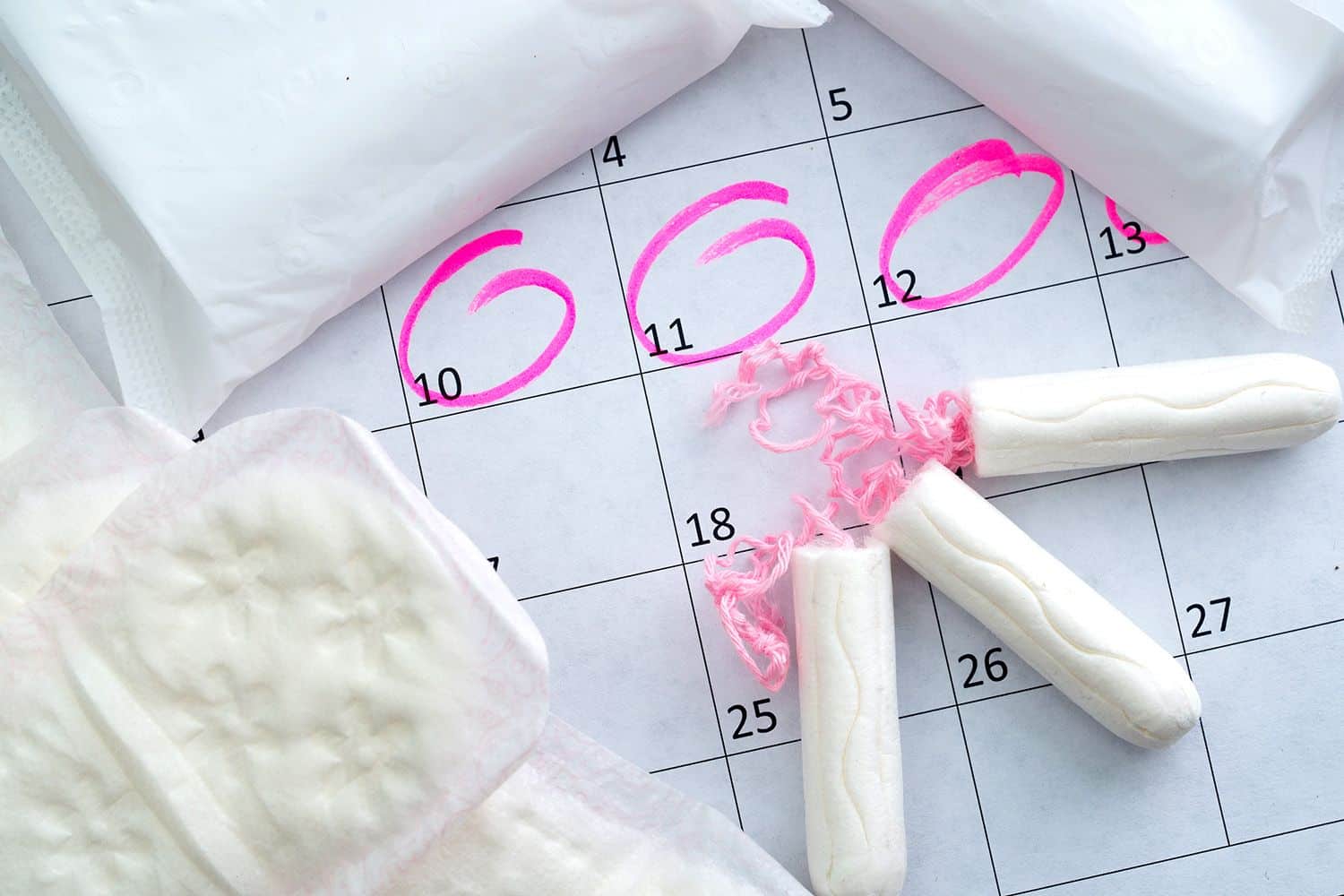We tend to think that the menstrual cycle is just menstruation, but in fact it is a series of transformations that occur in the uterus.
When we talk about the menstrual cycle, we immediately think about menstruation, right? However, although menstruation is part of the menstrual cycle, it encompasses many other things that reflect on a woman’s health and well-being. But what is the menstrual cycle anyway? So, in general, it is a cycle of transformations that happen in the uterus. It is these transformations that are responsible for preparing the uterus to receive an embryo if there is a pregnancy.
The menstrual cycle is a natural process that all women of reproductive age go through in their lives. Therefore, every month from puberty to menopause, a woman’s body is undergoing biological changes that occur due to hormonal variation. Therefore, these changes are divided into phases and constitute the menstrual cycle.
So, to understand what the menstrual cycle is, we need to know each phase of this cycle and what the function of each one is. And that’s what we’re going to see in this article.
What is the menstrual cycle?
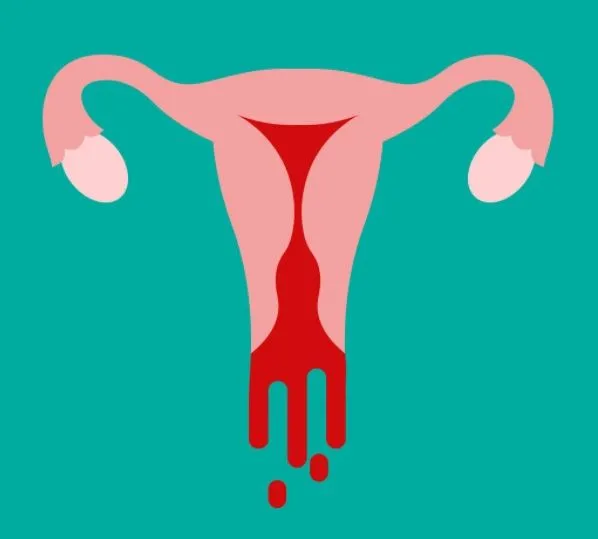
What is the menstrual cycle is an important question to ask when you are a woman. After all, it directly interferes in all aspects of female life. Menstruation is indeed part of this cycle, but it is not everything. In fact, menstruation is just the first phase of the menstrual cycle, which is made up of two cycles that interact with each other.
The first phase of the menstrual cycle occurs in the ovaries and the second in the uterus. While the first half of the cycle serves to prepare the egg for release and build uterine tissue, the second half prepares the uterus and body to accept a fertilized egg. Or, when pregnancy does not occur, prepare for the next cycle.
Therefore, the brain, ovaries and uterus work together and communicate with each other through chemical signals sent through the blood by the body, called hormones. All of this works in balance to keep the menstrual cycle going.
Each menstrual cycle begins with the first day of menstruation and ends with the start of the next period. Therefore, a complete menstrual cycle generally lasts 28 days, but in some cases it can vary between 20 and 40 days. This can vary from woman to woman, from cycle to cycle and can also change over the years.
Therefore, the length of the cycle changes between the menarche phase, which is when the first menstruation occurs during puberty, and menopause, which is when a woman’s reproductive life ends.
So what is the menstrual cycle? It is precisely the set of cyclical transformations that occur in the uterus, also known as the uterine cycle. These transformations are divided into four phases: menstrual, follicular, ovulatory and luteal, which we will learn about below:
Phases of the menstrual cycle
So, to understand what the menstrual cycle is, we need to know each of its phases and their functions:
Menstrual phase
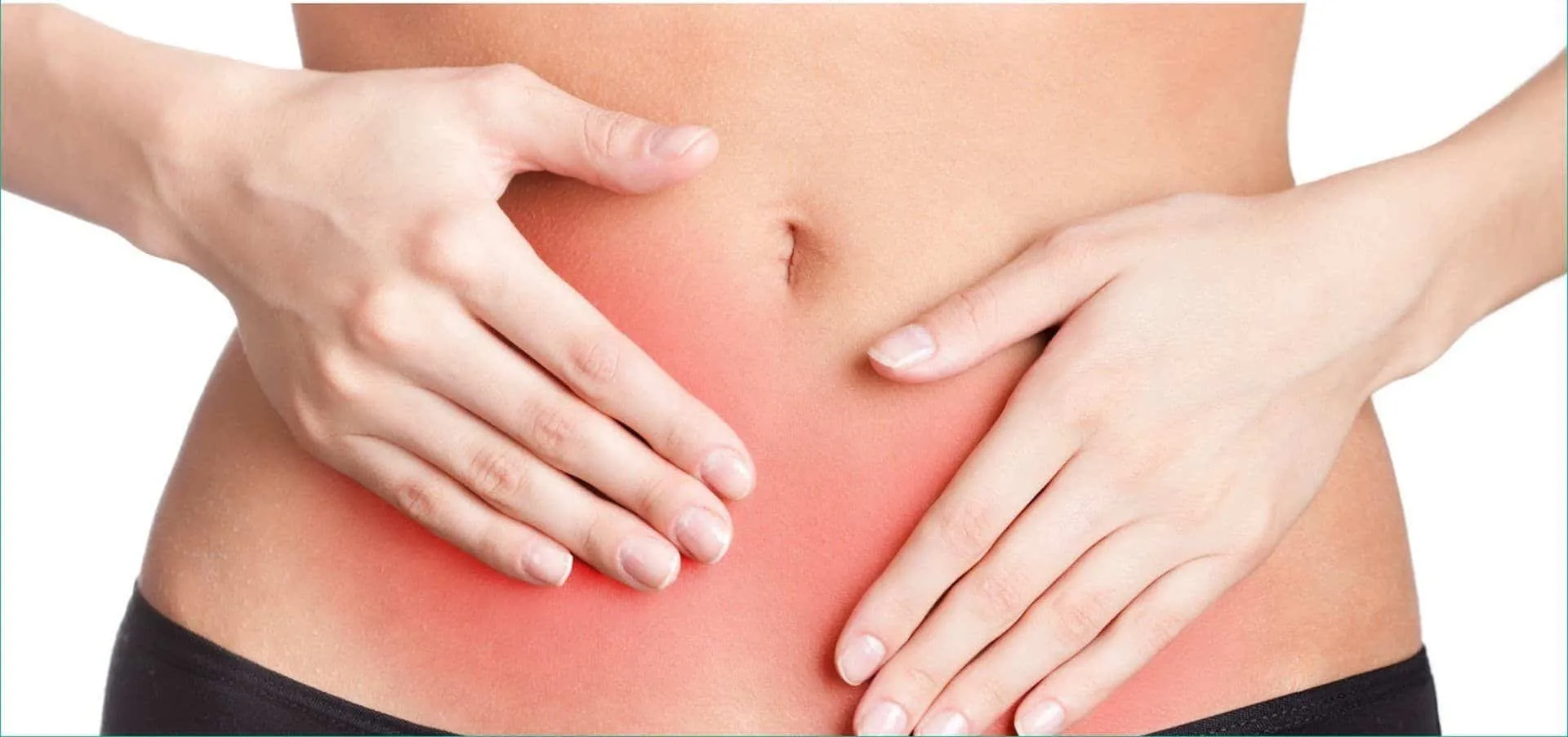
The menstrual phase is the first stage of the menstrual cycle. It begins when the egg from the previous cycle was not fertilized, and due to the lack of pregnancy, the levels of female hormones, estrogen and progesterone, fall. Therefore, the lining of the uterus that would be used to support pregnancy becomes unnecessary and is then expelled by uterine contractions, resulting in menstruation, which is nothing more than blood, mucus and uterine tissue.
This phase lasts an average of 5 to 6 days, and can last up to 8 days. During this period, it is common for women to experience symptoms such as: cramps, swelling and pain in the breasts, abdominal swelling, tiredness, headaches and lower back pain, and mood changes and irritability.
Follicular phase
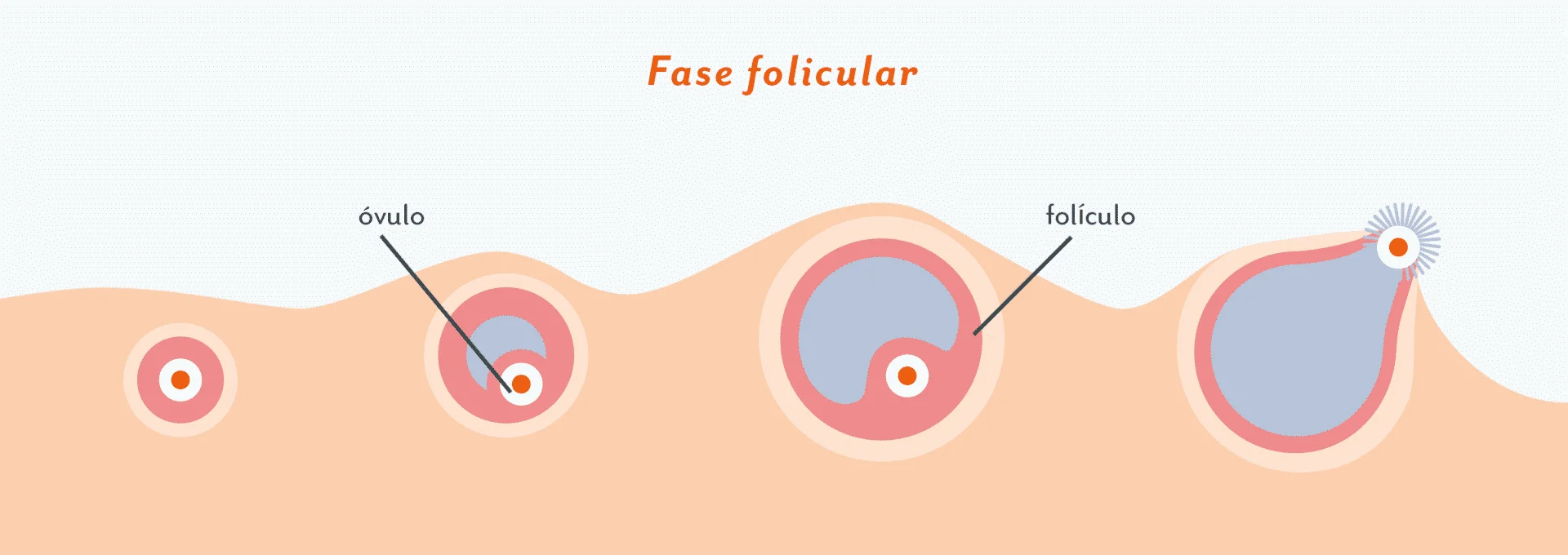
The second phase, the follicular phase, also begins on the first day of the menstrual cycle, that is, overlapping the menstrual phase. However, it ends only with the beginning of the ovulatory period, lasting an average of 16 days.
The follicular phase begins with the signal sent by the hypothalamus to the pituitary gland to release follicle-stimulating hormone (FSH). It is this hormone that causes the ovaries to produce follicles. Normally, 5 to 20 follicles are produced, and each of them contains an immature egg.
However, only the healthiest egg will mature. In rare cases, a woman may have two mature eggs. Therefore, the rest of the follicles will be reabsorbed by the body. Then, the maturing follicle releases a wave of estrogen that will thicken the uterine tissue, creating an environment conducive to receiving an embryo.
Ovulatory phase
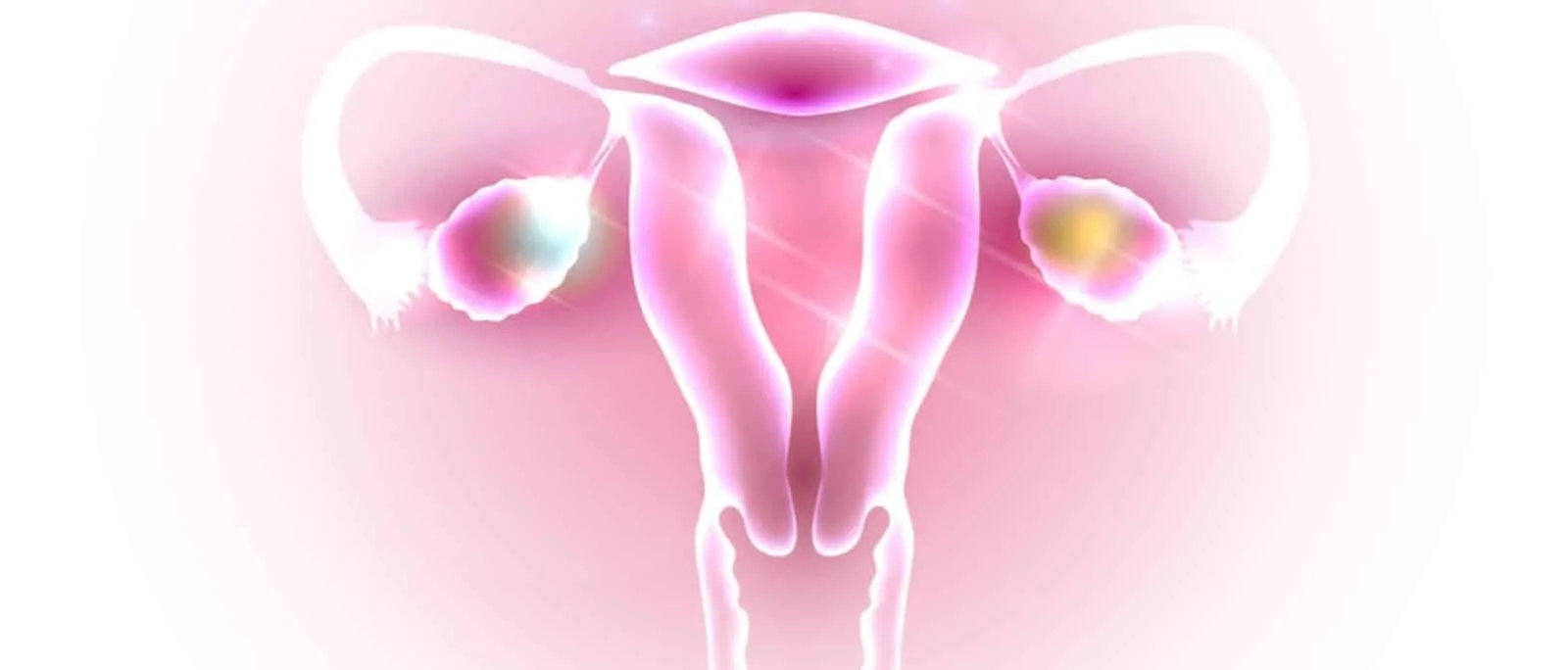
Then, with the increase in estrogen levels during the follicular phase, this causes the pituitary gland to release another hormone, the luteinizing hormone (LH), which begins the ovulatory phase.
The process of ovulation happens when the ovary releases that mature egg. This egg will pass through the fallopian tubes towards the uterus to be fertilized by a sperm. Therefore, it is in the ovulation phase that the woman is in the fertile period, which lasts an average of 24 hours. After this period, the egg will die if it is not fertilized.
During this period, it is common for women to experience symptoms such as: a small increase in basal body temperature and transparent vaginal mucus, which resembles the appearance of egg white. In the case of women with a regular cycle of 28 days, the ovulatory phase will occur around the 14th day, that is, exactly in the middle of the menstrual cycle.
Luteal phase
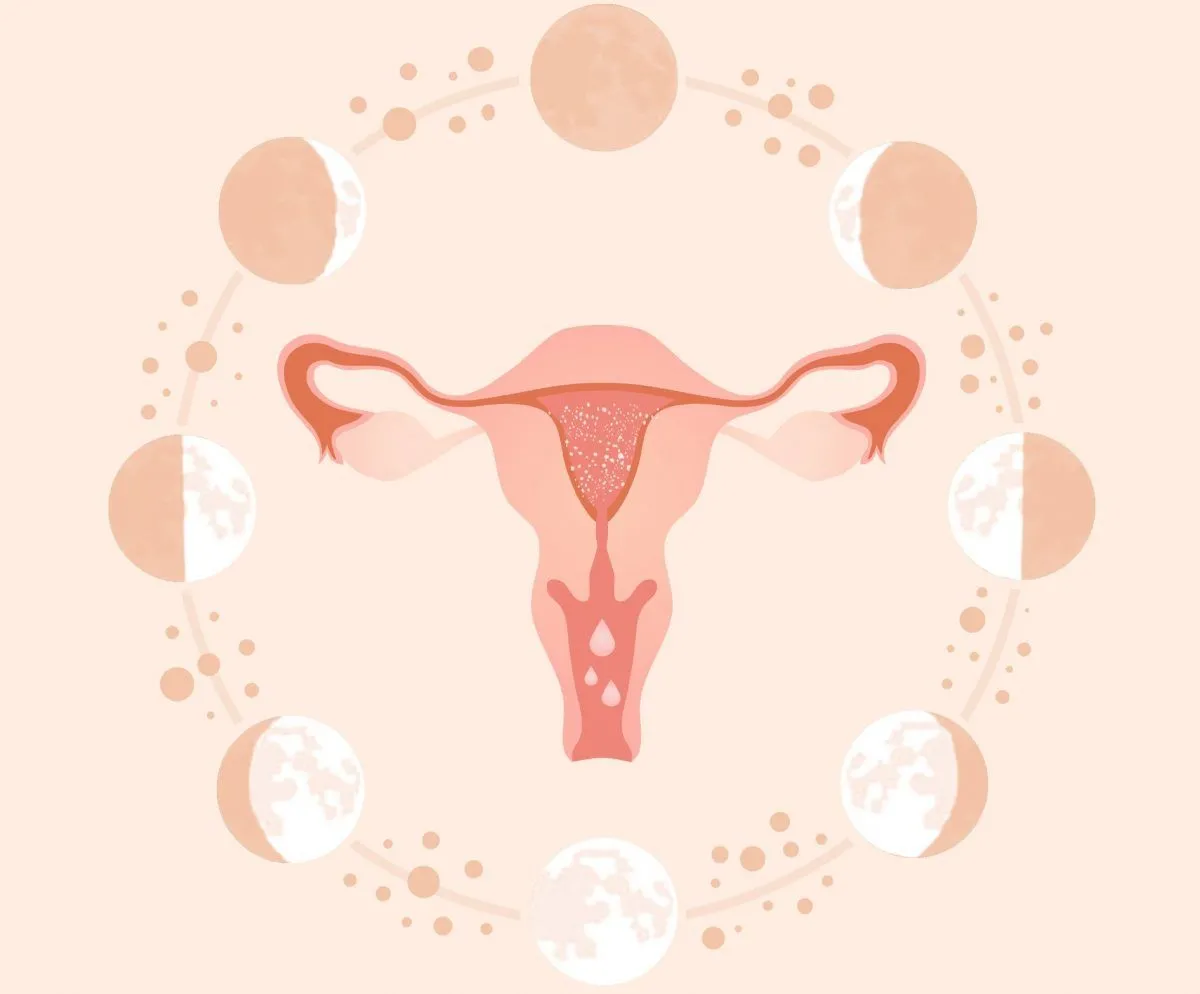
Then, after the follicle releases the egg, it transforms into the corpus luteum, which will produce the hormones progesterone and estrogen. In this way, hormones keep the lining of the uterus thick and prepared for implantation of a fertilized egg.
So, if a woman becomes pregnant, the body will begin to produce human chorionic gonadotropin (HCG), the hormone detected in pregnancy tests to confirm the diagnosis. This hormone will help keep the corpus luteum and uterine lining thick.
If there is no fertilization, the corpus luteum will be reabsorbed by the body, causing a decrease in progesterone and estrogen levels, leading to the beginning of the menstrual period, consequently starting a new menstrual cycle.
Overall, the luteal phase lasts an average of 14 days, but can vary between 11 and 17 days. During this period, it is common for a white, pasty vaginal mucus to appear, similar to an ointment, but which is different from vaginal discharge.
Anyway, what did you think of this article? By the way, take the opportunity to check it out too. Is there really menstrual cycle synchronization?
Sources: Net Clue Ecycle Biology
Images: See Me Without Borders DHOJE Clue Febrasgo Jardim do Mundo

Sign up for our newsletter and stay up to date with exclusive news
that can transform your routine!
Warning: Undefined array key "title" in /home/storelat/public_html/wp-content/plugins/link-whisper-premium/templates/frontend/related-posts.php on line 12
Warning: Undefined array key "title_tag" in /home/storelat/public_html/wp-content/plugins/link-whisper-premium/templates/frontend/related-posts.php on line 13

